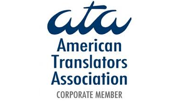May 24, 2017 by admin
Get a Free Quote
Our Accreditations





Recent Updates
Culture-bound syndromes and how language shapes illness
In her book Sleeping Beauties, neurologist Suzanne O’Sullivan explores the phenomenon of culture-bound illnesses around the world. The conditions she is interested in are psychosomatic disorders which arise due to a complex interaction between the mind and body, but… Read More
Following on from my last blog post looking at the challenges of converting the ingredients used in a foreign recipe into your target language, here I’ll be discussing some of the other issues that arise especially when it comes to availability and different cooking traditions.
A tricky challenge in the translator’s ingredients obstacle course are products which are available in ready-made form in some countries, but which will require detailed instructions on how to make them from scratch in other locations.
The domestic German baker can readily acquire “Tortenguss” (a glaze) to conjure up one of those beautiful, gleaming fruit-topped tarts or cakes you see in the Konditorei window as you take your Sunday afternoon stroll. The English home cook attempting to replicate this will have to be more resourceful and will need to make this product from scratch, perhaps using gelatine or arrowroot as the gelling agent.
Similarly, it is by no means frowned on in Germany to resort to shop-bought lebkuchen spices when rustling up your Christmas cookies. The English cook will need a well-stocked spice cupboard and some guidance on the relative proportions of cinnamon, cloves, allspice, nutmeg, coriander, cardamom, ginger, mace and star anise to use.
Once again we step outside the translator’s immediate remit but the food editor may need assistance when it comes to giving instructions on how to create a good homemade option in these cases.
Occasionally you will find ingredients which require detailed description in the source language because they are considered exotic or unusual, when they are absolutely commonplace in your target country. For instance, one German recipe I tackled went into great detail explaining what garam masala was and how you could go about obtaining this “obscure” ingredient.
That whole section of text was translated but then flagged up as redundant for the book editor to delete as superfluous for the average UK home cook. This in turn had repercussions for the graphic designers as the page layout had been built around an information box containing this information.
Not only do cooking traditions vary between countries, health and safety advice can be very different too. I worked on a series of German recipes, which specifically instruct the reader to wash the chicken before cooking, a practice which the UK Food Standards Agency explicitly warns against due to the risk of spreading campylobacter.
Recipe books also often offer advice for pregnant women when it comes to eating things like raw egg, mould-ripened cheeses and so on. The guidelines in this area are well known to be very country-specific with French expectant mothers quaffing wine and consuming camembert to their heart’s content, where their US counterparts are warned off such delights.While the translator may not be expected to be au fait with all such regional discrepancies, it certainly helps the editor if these can be flagged up early on in the translation process and the text amended accordingly.
While the translator may not be expected to be au fait with all such regional discrepancies, it certainly helps the editor if these can be flagged up early on in the translation process and the text amended accordingly.
Get a Free Quote
© 2024 All Rights Reserved
Rosetta Translation, 133 Whitechapel High St, London E1 7QA · 0207 248 2905
Comments
Add Comment